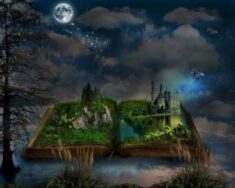Hello Artoons,
Welcome to #WorkshopOnWednesdays.
So far, we’ve covered the plot structure, PoVs, Subplots, and how to generate ideas for plotlines. Recently, there was a comment on one of the ArttrA-4 stories regarding the story setting. It was a very insightful comment and quite pertinent too. Today, we are proceeding with yet another facet of the art of storytelling – Setting and World Building.
This is quite an exhaustive subject. To simplify things, we’ve managed to break it down into the following.
- World Building
- Fictional Places
- Real places
- Setting Vs PoV
- Sensory details in the setting, and
- Setting and an introduction to Show vs Tell
World Building in Short Stories
The term world-building is usually associated with fantasy or sci-fi novels where a new world is established. Though world-building is indeed a part of a novel, short stories can also have their worlds. The main difference is that the world in short stories is less detailed, leaving more to the imagination of the reader. The setting is woven as a part of the story without making it an individual component or an entity in a short story.
The choice between using a real location and a fictional one is up to you. Pick whatever suits your story and what you are comfortable with. Research is a major element when using real locations, especially if you haven’t traveled to the place and have to rely on secondary information. Stories are not travel-blogs. You cannot get away with calling a place beautiful when it is not. Why? Because it will impact your story in more ways than one.
This is the reason I choose to set my stories in a fictional world. It gives me extra space to move things around and tweak the settings to suit my story. Want a sea nearby- make it a seaside town. Want a forest- live on the edge of another town. Simple, right?
But…
It is important to create a setting the reader can visualize. Contrary to popular opinion, you don’t have to waste too many words on it as well. The type of car used, the design of a building, a busy or deserted street, the food they eat and the time it is served, the attire of your characters, the language they speak, etc. all these give hints about the setting.
Ex 1: As sunlight streamed through the lace curtains, the bees buzzed near the window. She woke up feeling refreshed as the scent of marigolds and chrysanthemums filled the air.
Here, we can picture the house, the room, the surroundings, and the season in two lines. The reader can imagine the rest. We can also see how the character is refreshed, meaning she was tired/ exhausted the previous night.
Ex 2: The house was a stark contrast to the illuminated street. He wondered how anyone could resist the urge to flee as the structure loomed. The residents smiled, walking past as if nothing was out of the ordinary.
In this example, we are establishing the presence of an unusual-looking house that could play a major role in the story. The house is dark, menacing, and could be haunted/ hiding secrets. The residents of the town are either unaware (which means your protagonist is intuitive), or they are used to ignore it (hiding the secrets which are common in small towns) and moving on with their lives. This again means, the residents would not like to have any of the past dug up by the protagonist=> establishing a foundation for conflict.
Weaving bits and pieces of the setting into your story will have a better impact than dumping information on the reader at once. With fictional settings, you can adjust as you go and create a believable world in limited words. But first, you will need to know what kind of setting your story requires. And, here, we go back to the plotting lesson.
This Week’s Exercise: Create a fictional world in a story in 100 words (or less).
**Note: Introduction written by Varadhrajan Ramesh aka Robo.
***
Photo By: Ivan Tamas









